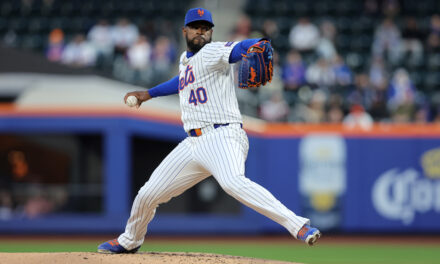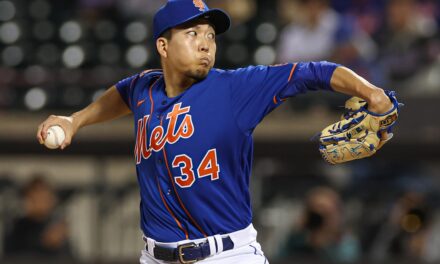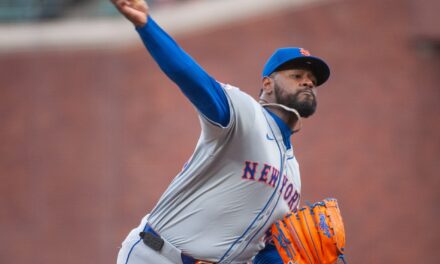There are three words every baseball fan loves to hear. They bring us back to the time when we were kids and just wanted to have a catch with our friends. They provide warmth in our hearts and minds during an otherwise cold winter. They provide us with a sense of anticipation that the next season will be better than the last. Those three words are PITCHERS AND CATCHERS and as of today, the pitchers and catchers for the Mets have descended upon Port St. Lucie to begin the six-week long Spring Training before making their trek back up to New York.
But will the Mets have enough locker space in Port St. Lucie for all the catchers they signed (and still might sign)?
So far, in addition to the incumbent Omir Santos, the Mets have signed Henry Blanco and Chris Coste. Last year’s late season call-up, Josh Thole, also has a chance to get more at-bats at the big league level in 2010. Now the word is out that Rod Barajas is likely to sign a minor league deal with the Mets after the Mets failed in their attempts to bring Bengie Molina and Yorvit Torrealba to Flushing.
Casey Stengel once said that a team had to have a catcher or else they would have a lot of passed balls. But in their attempt to sign every catcher this side of Crash Davis and Jake Taylor, the Mets neglected to upgrade their starting pitching staff.
The top four starters from 2009 (Johan Santana, Mike Pelfrey, John Maine, Oliver Perez) are all back to reprise their roles. Although there were numerous free agent options they could have considered, the Mets came away with no one to round out the rotation. There was no John Lackey being fitted into a Mets jersey and no press conference announcing the signing of Ben Sheets. Not even starters like Joel Piñeiro and Jason Marquis, pitchers who Mets fans were on the fence about, could be coerced to sign with the team.
When Bengie Molina’s name was being bandied about, much attention was paid to his offensive skills. After all, of all the free agent catchers available, he was clearly the best offensive option. But with the lack of an upgrade in the starting rotation, especially with so many starters coming off seasons cut short by injuries, the Mets might have needed his game-calling and defensive skills more than his bat.
Now it will be up to the catching corps of Santos, Blanco, Coste (and maybe Barajas) to be able to handle a pitching staff that could potentially be full of holes. They will need to help the younger starters (Pelfrey, Maine, Perez) hone the talents they exhibited prior to the 2009 season. They will also need to chip in with their arms when a caught stealing or two is needed, especially if the staff continues to have difficulty finding the plate as they did in 2009.
Henry Blanco is the most experienced of the squad. However, since making his debut in 1997, he has only caught 100 or more games twice, usually being relegated to the bench or the trainer’s table. Chris Coste has started a mere 176 games in four big league seasons and Omir Santos has been his team’s starting catcher only 77 times in his career. Rod Barajas is in the same boat that Henry Blanco is sailing in, having been in the majors for over a decade but only logging two seasons in which he played at least 100 games.
Can the pitching staff succeed with the catching corps the Mets’ front office put together for them? Let’s hope so because if the catchers can’t get the pitchers to pitch up to their potential, Jerry Manuel might wear out the bottom of his cleats racking up the frequent walker miles between the dugout and the pitcher’s mound. As Casey said, without catchers, a team will have many passed balls, but without GOOD catchers, a team might have more pressing concerns. A good catcher can go a long way towards helping a pitching staff that has numerous question marks. If the ragtag group of catchers the Mets have assembled can come through, then the Mets might have one less concern to worry about.














